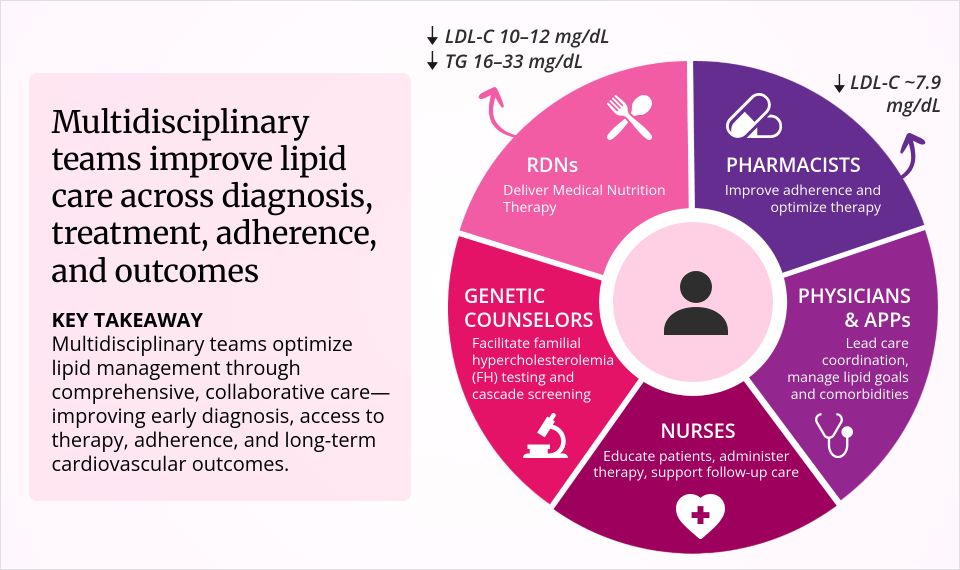
Higher daily protein intake was a protective factor for graft function of kidney transplant recipients in the early post-transplant period: a retrospective cohort study - PubMed
Source : https://pubmed.ncbi.nlm.nih.gov/41057791/
ChiCTR2500099186. (Registration Date 2025.03.19) Clinical Trial Registry ( http://www.chictr.org.cn/ ).
In a cohort of 176 kidney transplant recipients, higher early post-transplant protein intake (≥1.4 g/kg/day) was associated with improved graft function, better lipid and hemoglobin profiles, and overall enhanced recovery outcomes.
For patients recovering from myocardial infarction (MI), early initiation of high-intensity statin therapy is standard. Yet, sustaining LDL-C control in the months and years that follow is often overlooked despite its potential to reduce recurrent cardiovascular events.
Despite clear guideline targets, real-world data show that many post-MI patients fail to achieve or maintain LDL-C levels below 70 mg/dL. Delays in follow-up testing, therapeutic inertia, and disparities in care contribute to this gap. Real-world data suggest that women and older adults may be less likely to receive high-intensity lipid-lowering therapy (LLT) or timely reassessment, reflecting disparities in access or treatment patterns.
For patients who remain above target despite maximally tolerated statins—or who are unable to tolerate them—adjunctive therapies that enhance LDL receptor activity offer a chance to drive LDL-C lower and reduce residual risk. But these benefits hinge on timely recognition of inadequate response and a proactive approach to intensification.
The 2025 AACE lipid management guidelines recommend a treatment goal of LDL-C <70 mg/dL in adults with ASCVD or at increased risk. Reaching—and maintaining—this threshold has been linked to fewer recurrent events, including MI, stroke, and revascularization. But success depends not just on what we prescribe, but on how closely we monitor, reassess, and adapt over time.
How do you coordinate post-MI lipid management in your practice? What prompts you to intensify treatment when targets aren't met?
-
 Sachin Panchal4wWhen a patient is seen after a cardiac event: • Medication review: • Current medications are reviewed to ensure adherence, tolerance, and appropriate dosing. • Goals of therapy are discussed with the patient, emphasizing the importance Show More
Sachin Panchal4wWhen a patient is seen after a cardiac event: • Medication review: • Current medications are reviewed to ensure adherence, tolerance, and appropriate dosing. • Goals of therapy are discussed with the patient, emphasizing the importance Show More -
 Anonymous User1moWhen a patient is seen after cardiac event meds are reviewed and discussed regarding goals of treatment and labs to follow up 6-8 weeks later. If LDL is above Show More
Anonymous User1moWhen a patient is seen after cardiac event meds are reviewed and discussed regarding goals of treatment and labs to follow up 6-8 weeks later. If LDL is above Show More
Show More Comments

Navigating Hypoxemic Respiratory Failure in Critically Ill Cardiac Patients - PubMed
Source : https://pubmed.ncbi.nlm.nih.gov/41043940/
Acute respiratory failure is a common reason for admission to cardiac intensive care units and the prevalence of respiratory failure in this cohort is increasing over time. Hypoxemia can occur...
This review examines hypoxemic respiratory failure mechanisms in cardiac ICU patients, detailing cardiogenic and noncardiogenic causes, ventilation strategies, sedation optimization, and management of refractory hypoxemia in critically ill cardiac populations.
Obesity disrupts endocrine health through insulin resistance, chronic inflammation, and altered adipokine signaling. This narrative review explores how different dietary patterns influence hormonal balance in men and women.
Highlights:
- In men, obesity is linked to decreased testosterone, reduced thyroid function, possibly reflecting thyroid hormone resistance, and elevated cortisol
- In women, it increases risks for PCOS, infertility, and androgen excess
- Calorie restriction, low-carbohydrate diets, Mediterranean, and plant-based patterns show hormonal benefits
- Hormonal effects of dietary changes are often sex-specific
What sets this study apart:
Unlike conventional reviews that focus on single nutrients, this synthesis examines whole dietary patterns and their interaction with sex-specific hormonal physiology. It emphasizes the importance of individualized nutrition plans based on reproductive and metabolic profiles, underscoring that one-size-fits-all approaches are inadequate for endocrine health.
Limitations:
As a narrative review, conclusions are drawn from existing literature rather than new clinical data. Long-term outcomes and sustainability of restrictive diets, such as ketogenic or very low-carbohydrate regimens, remain underexplored.
What role does gender play in how dietary choices influence endocrine health?






